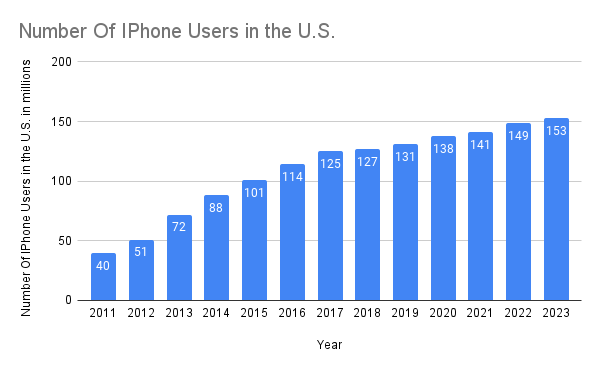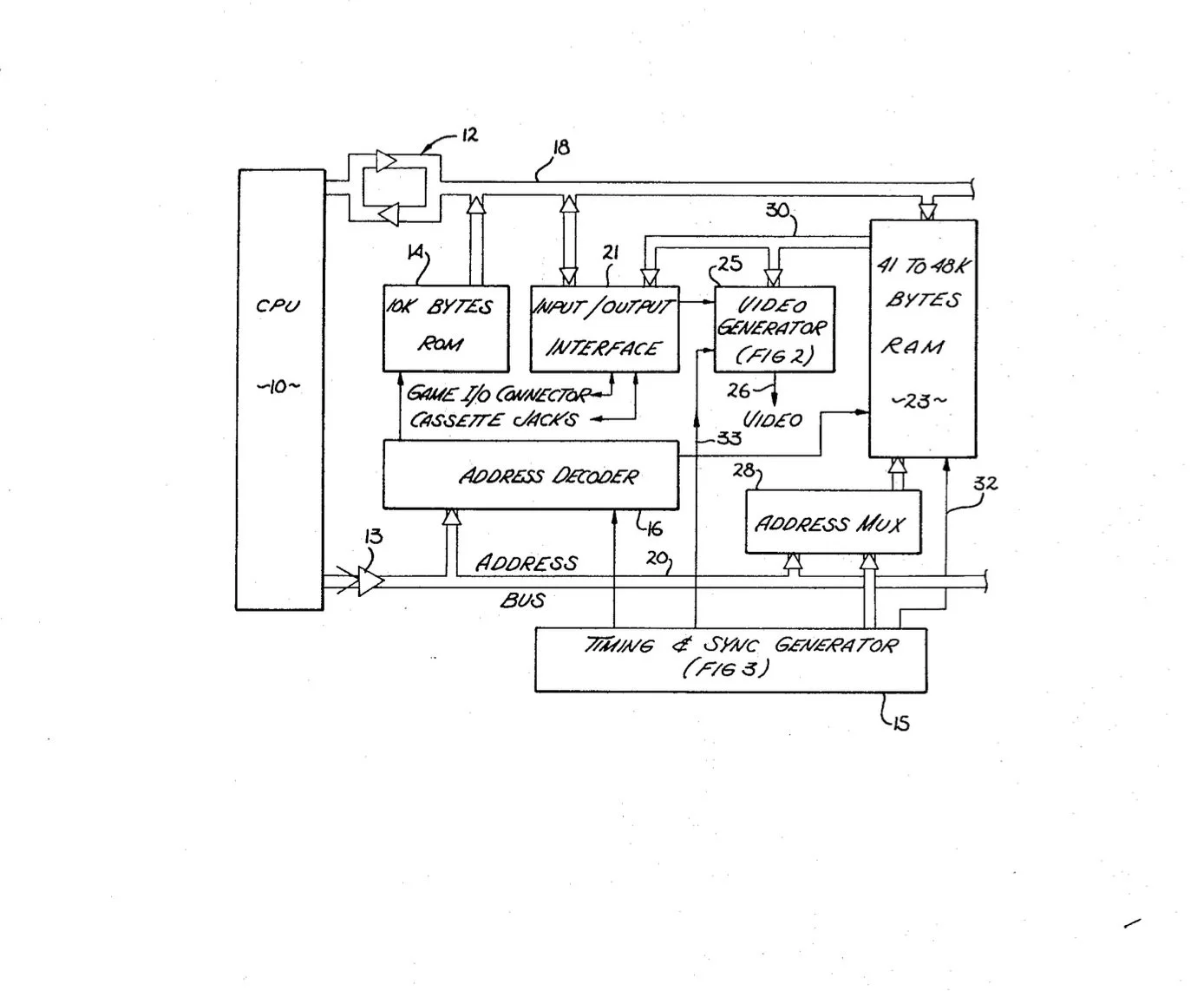Apple Design Patents
Did you know that more than 40 percent of smartphone users in the U.S. have an iPhone (Statista 2023)? When thinking of phones in this modern era, typically the first thing that comes to mind is an iPhone for most Americans. In the ever-evolving landscape of technology, Apple was one of the first companies to stand out from a design and aesthetic perspective. Most consumers will associate Apple with its highly innovative smartphones and laptops because Apple has mastered the art of UX and hardware design. Due to its very user-friendly designs, Apple held a market share of over 54% in the U.S. smartphone market in April 2024 (gs.statcounter).
Did you know that iPhones weren’t the first touch screen phones to be made? It was actually IBM’s Simon which was created in 1994 (Georgia Southern). But due to the iPhone design and success it's commonly believed that iPhones were one of the first touchscreen phones. This may stem from Apple's strategic use of design patents.
What Is A Design Patent?
A design patent is “a type of legal protection for unique visual qualities of a manufactured item. It may be granted for products with a distinct shape, configuration, or surface decoration.” (Investopedia). Design patents protect the way a product looks. Many companies have design patents. If Apple did not, you would see a lot of companies with iPhone knockoffs and lookalikes. Design patents protect the novel design of a product for 15 years after the filing of the patent application, after which they lose protection. A common misconception is that patents protect inventions worldwide or in many countries. That is not the case - you will need to obtain a patent in each country where you desire protection.
Example of AirPods design patent
Interesting Apple Design Patents
Apple is a historic brand dating back to 1976. Originating as a computer brand it eventually diversified into phones, speakers, AR devices, etc. encompassing a decent chunk of technology products. Along the way Apple had a couple key design patents that cemented their status of one of the biggest if not the biggest tech company in the world for the past couple decades.
One of Apple's earliest computers, the Apple II, was one of the key factors early on that led Apple to adopt a user-friendly, ease to use mentality in their products. The Apple II was one of the first and highly successful mass produced personal computers in the market. Created in 1977 the Apple II was among the first to be featured in a plastic like case with a typewriter-like keyboard making it easier for users to incorporate into the household. Due to the household friendly look, it helped demystify and normalize computers within households. Furthermore the Apple II had expansion slots which added new capabilities which helped boost sales and diversify its customer base expanding into the accounting markets as an example. The Apple II also featured a “killer app”, visicalc which was just a spreadsheet program which drove up sales. To stand apart from its competitors Apple II was the first to produce color graphics which was pivotal for gaming and helped stand above its competitors.
From a design standpoint, the Apple II was monumental as it helped with diversifying its customer base as computing was mainly for governmental/military use, scientific research and some business/industry. The Apple II was very key in expanding into other markets such as finance, academia and even household use. The Apple II also played a crucial role in establishing its brand identity as an innovator and a user friendly company. The Apple 2 design patent (4,136,359) also helped Apple as the 70’s and 80’s were flooded with new and mass competitors.
Apple 2 Case
Apple 2 motherboard
iPhone and iPhone GUI Design Patents
Another important Apple design patent was for the iPhone created in 2007. The iPhone itself so revolutionized the mobile phone market that the industry itself changed. The phone combined three products into one - the iPod touch, a mobile phone, and a groundbreaking internet communication device.
The iPhone’s design featured a 3.5 inch display with a 2-megapixel camera and a home button with a rectangular curved box shape. The curved box shape was quite innovative as other mobile phones during that time were more utilitarian designs which had keyboards and smaller screens such as the Blackberry. The iPhone was also groundbreaking due to the innovative multitouch gesture, which changed the fundamental way of how consumers would interact with phones. To zoom in, for example, users would pinch their fingers. These features were innovative in 2007. Even though the multitouch feature is a utility feature, it wouldn't have been possible without the 3.5-inch display design covered by the patent.
Apple's design patent for the iPhone’s graphical user interface (GUI) marked a significant milestone for iPhones and smartphone evolution. The patent covers the iconic grid arrangement of icons on the iPhone’s screen, which has become the standard in the industry. The design patent not only protected the visual layout of Apple's UI but also reinforced the brand's commitment to providing a cohesive and user-friendly experience.
The importance of the iPhone 1's design patent cannot be overstated. It played a crucial role in distinguishing the iPhone from the burgeoning smartphone market of the mid to late 2000s. The iPhone stood out from the competition, showcasing Apple's dedication to innovative design and functionality. This helped define Apple as a company synonymous with cutting-edge technology and user-centric design.
The significance of the iPhone 1's design patent extends beyond brand differentiation. It set new industry standards for smartphones. Prior to the iPhone, most phones featured physical keyboards and less aesthetically pleasing interfaces. The introduction of the iPhone's touch screen and sleek design demonstrated the importance of aesthetics and user experience in smartphone development. As a result, other manufacturers quickly adopted touch screen interfaces, transforming the smartphone landscape and aligning with the new standard established by Apple.
How To File A Design Patent?
To file for a design patent you would first need to determine if you can patent it or not. In order to do that you must ensure that your design is new, original and non obvious to other existing designs. The design must be tied to a particular product and should be entirely ornamental. If it has some type of functionality (particular to the product) then a utility patent would be appropriate. After that you must prepare drawings or photographs depicting the whole design. Then prepare a specification which includes title description and features of the intended design. After that you must attach at least a single claim (claim being what exactly you want to protect). Last but not least, file and wait to hear back.
There's a common misconception that the law concerning utility patents and design patents is the same. There are similarities, but some requirements differ. Design patents requirements under the law are originality, ornamentality, visibility and subject matter according to section 171 of title 35 of the U.S. Code. Design patents only last 15 years compared to the 20 years of utility patents.
References
“Apple - II.” Patent Artwork, https://www.patentartwork.co/patent-art/Apple-ii/
Apple Won 57 Patents Today Covering a Design Patent for the Original 2007 iPhone, Liquid Metal Used in iPhones & More - Patently Apple, https://www.patentlyApple.com/2018/11/Apple-won-57-patents-today-covering-a-design-patent-for-the-original-2007-iPhone-liquid-metal-used-in-iPhones-more.html
“Design Patent Application Guide.” United States Patent and Trademark Office - An Agency of the Department of Commerce, 28 Apr. 2023, https://www.uspto.gov/patents/basics/apply/design-patent
Kenton, Will. “Design Patent: Definition, How It Works, Examples.” Investopedia, Investopedia, https://www.investopedia.com/terms/d/design-patent.asp#:~:text=A%20design%20patent%20is%20a,%2C%20configuration%2C%20or%20surface%20decoration
Laricchia, Federica. “U.S. iPhone User Share 2014-2022.” Statista, 30 Oct. 2023, https://www.statista.com/statistics/236550/percentage-of-us-population-that-own-a-iPhone-smartphone/#:~:text=How%20many%20people%20have%20iPhones,smartphone%20users%20in%20the%20country
“Library Guides: Future Phonics: History of Phones.” History of Phones - Future Phonics - Library Guides at Georgia Southern University, https://georgiasouthern.libguides.com/c.php?g=612229&p=4545365
Lin, Ying. “How Many Americans Have iPhones? [Updated Mar 2024].” Oberlo, Oberlo, https://www.oberlo.com/statistics/how-many-americans-have-iPhones#:~:text=How%20many%20people%20in%20the%20US%20have%20iPhones%3F&text=According%20to%20recent%20statistics%2C%20there,annual%20increases%20in%20recent%20years
Taneja, Akhil. “How iPhone Revolutionized the Smartphone Industry: Cashify Mobile Phones Blog.” Cashify, cashify, 10 Mar. 2023, https://www.cashify.in/iPhone-revolution-in-smartphone-industry
“USD604305S1 - Graphical User Interface for a Display Screen or Portion Thereof.” Google Patents, Google, patents.google.com/patent/USD604305S1/en?oq=US%2BPatent%2BD604%2C305
“USD618677S1 - Electronic Device.” Google Patents, Google, https://patents.google.com/patent/USD618677S1/en.
“Design Patent Protection in the United States.” Oblon, https://www.oblon.com/publications/design-patent-protection-in-the-united-states#:~:text=The%20first%20part%20of%20section,be%20an%20article%20of%20manufacture.
"Mobile Vendor Market Share United States Of America." Statcounter Global Stats, StatCounter, May 2024, https://gs.statcounter.com/vendor-market-share/mobile/united-states-of-america.
United States Patent and Trademark Office. "Public Pair." USPTO, https://ppubs.uspto.gov/pubwebapp/static/pages/ppubsbasic.html.
"Zoom in or Out of a Webpage." BlackBerry Access iOS User Guide, BlackBerry, https://docs.blackberry.com/en/blackberry-dynamics-apps/blackberry-access/3_4/blackberry-access-ios-user-guide/kzq1481745159974/Zoom-in-or-out-of-a-webpage.
"Apple 2." Wikimedia Commons, https://commons.wikimedia.org/w/index.php?search=apple+2&title=Special:MediaSearch&go=Go&type=image.
"iPhone User Statistics." DemandSage, 2024, https://www.demandsage.com/iPhone-user-statistics/.






